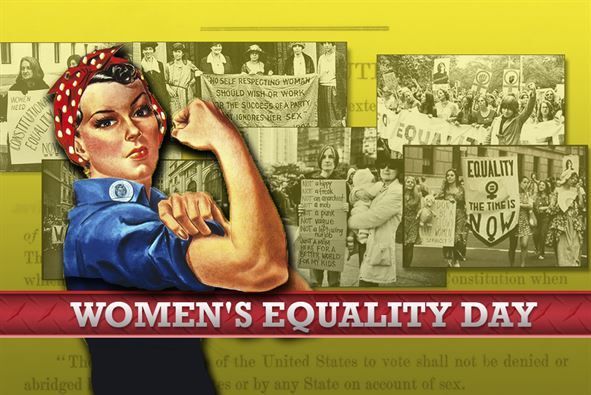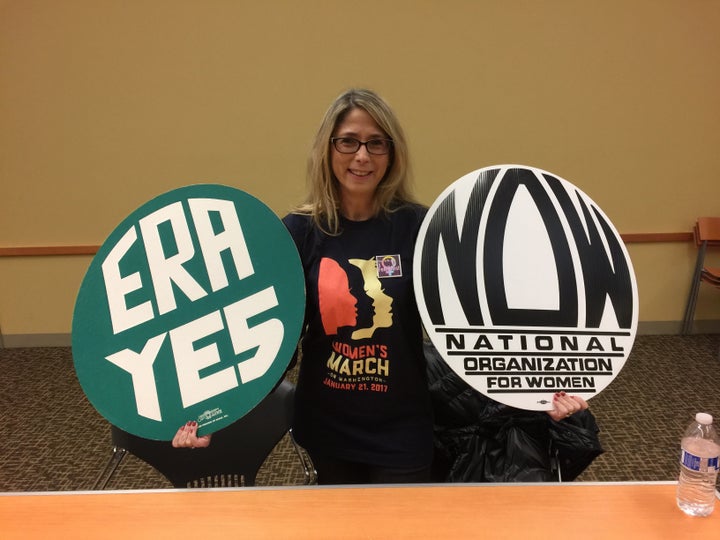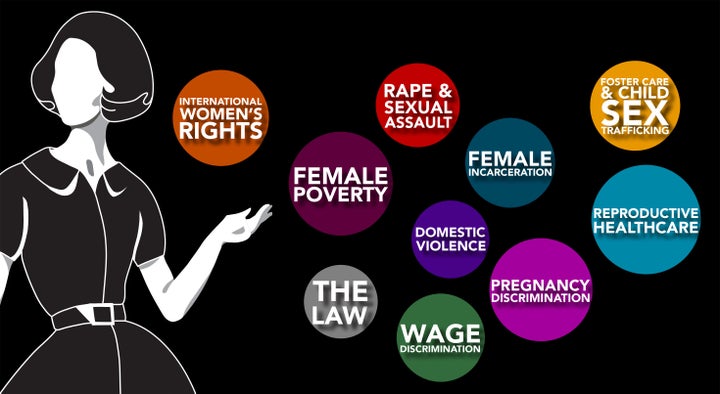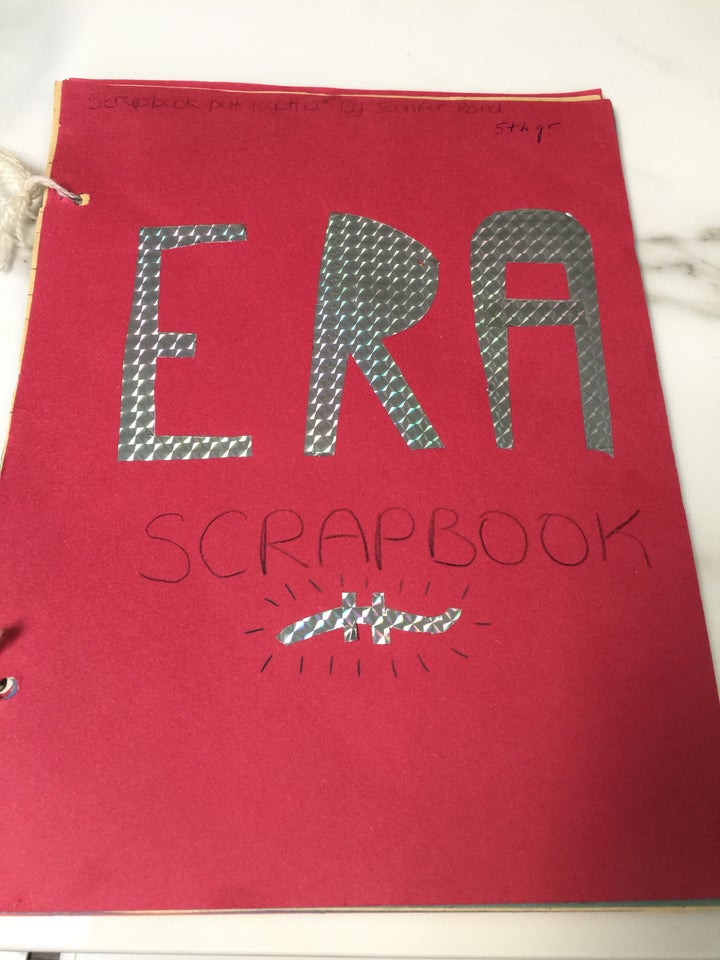
August 26th is National Women’s Equality Day, which is something of an oxymoron given that women and men in the United States do not have equal rights—yet.
It doesn’t take much in the way of enlightenment to agree that, as a matter of principle and of human rights, the Equal Rights Amendment (“ERA”) is a no-brainer addition to the United States Constitution, which would bring into modern times this cornerstone of our democracy. Nonetheless, and despite ample momentum during the tail end of the Civil Rights movement, and passage by our Congress in 1972, the requisite number of states failed to ratify the ERA.
Yes, it’s true: to date there is no mention of equality between men and women in our Constitution.
In fact, I recently reread all of our foundational documents and discovered that the number of times the words “man,” “men,” “male,” “he,” or “his” are mentioned is as follows:
Declaration of Independence—2 times,
United States Constitution—9 times
Amendments to the Constitution –9 times
That’s a total of 20 times for those of you who are keeping score (and I may have missed a few others).
The number of times that feminine nouns or pronouns are mentioned in these same documents? Zero.
(Incidentally, the nouns “person,” “people,” and “citizen” are mentioned many times but, of course, we know that the Founding Fathers considered neither persons of color, nor women, to be “persons,” with any attending rights and privileges.)
Clearly, in drafting these documents, the Founding Fathers failed to (as implored by Abigail Adams in a letter to her husband, John) “remember the ladies.” Abigail was ahead of her time in recognizing the inherent unfairness of society in its treatment of women. In the late 18th century, women were considered the property of their fathers or husbands, restricted from owning their own property, and deprived of basic civil rights, such as the right to vote.
Once women’s rights activists achieved, finally, the extremely challenging goal of obtaining voting rights for women in 1920, they soon set their sights on the next uphill battle—passage of a constitutional amendment guaranteeing that women and men would be treated equally under the law. Almost one hundred years later, we still don’t have an ERA, and it’s a problem on many levels. The absence of an Equal Rights Amendment in our Constitution, and the ongoing failure to ratify it, effectively proclaims to the world that the United States, in 2017, still considers women to be less than human.
The Nuts and Bolts of the ERA

-The original ERA states, “Equality of rights under the law shall not be denied or abridged by the United States or by any state on account of sex.” Beginning in 2014, the text of the bill introduced in the House of Representatives was changed to add, “Women shall have equal rights in the United States and every place subject to its jurisdiction.”
-After Congress passed the ERA in 1972, 35 of the states had ratified the ERA, when the deadline for ratification—extended once by Congress—was allowed to expire in 1982.
-Earlier this year, Nevada became the 36th state to ratify the ERA, meaning that only two more states must ratify the ERA for it to become an official amendment to the U.S. Constitution
-The 14 states that have not yet ratified the ERA are Alabama, Arizona, Arkansas, Florida, Georgia, Illinois, Louisiana, Mississippi, Missouri, North Carolina, Oklahoma, South Carolina, Utah, and Virginia.
-The ERA, while popular in the 1970s, failed in large part because conservative female lawyer and activist, Phyllis Schlafly, convinced women and lawmakers that the ERA was actually a bad thing for women. Why, you may ask? The basic notion was that women (at least white women) had it pretty cushy as housewives, and should feel fortunate not to be subject to any future military drafts.
-The Reagan/Bush years were all about so-called “family values” and relative peace and prosperity (at least for white Americans), with relatively little in the way of social progress. The activists that drove the civil rights movement took a pause, leaving unfinished business. In particular, they more or less stopped pushing for the ERA (though the bill continued to be introduced each legislative session).
-After years of the ERA languishing, beginning in 1994, activists once again began to lobby at the state level for the ratification of the amendment.
-Part of the problem may well have been the impression among an overwhelming majority (80%) of Americans who believed—erroneously—that the Constitution already provides a guarantee of equal rights for men and women. Nevertheless, a poll in 2016 revealed that 94% of Americans supported such an amendment to the Constitution, particularly when asked the question without use of the term “Equal Rights Amendment” or “”ERA.”
-Congress has the power to expressly extend the deadline for ratification to give activists in the remaining states the time they need to persuade their legislatures to do the right thing and give women equality under our Constitution. There is precedent, however, that such additional legislation by Congress is unnecessary. At least one other constitutional amendment, the 27th Amendment, has been passed by Congress, but not ratified by the requisite number of states after a lapse of many years—in the case of the 27th Amendment more than 200 years after passage.
-The remaining states that have at least begun the process of ratifying the ERA in the near future, introducing bills in 2017, are Arizona, Florida, Illinois, North Carolina, Utah, and Virginia. The victory in Nevada indicates that ratification is an achievable goal, provided enough activists get behind it and persistently lobby their state legislators.
Why We Need the ERA (Now More Than Ever)
I never doubted that equal rights was the right direction. Most reforms, most problems are complicated. But to me there is nothing complicated about ordinary equality. — Alice Paul (1885-1977)

ERA Yes: NOW has always been instrumental in leading the foray for women’s rights.
The argument most often put forth against passage of the ERA is that it is unnecessary given other protections afforded to women. It’s simply not the case, however, that women are guaranteed equal rights in our country. If there are no guarantees of equal rights in our Constitution, this means that women are at the mercy of all three branches of our government—a government that is by and large made up of men, a government that is now run entirely by conservatives.
How so?
We start with the fact that nowhere in our Founding Documents is it explicitly stated that women are included in the seemingly unambiguous phrase, “All Men are created equal.” Indeed, women are never specifically mentioned in any of our founding documents, nor our constitutional amendments. (Interestingly—and depressingly—masculine words like “he” or “his” were often used by the Founding Fathers when describing the office of the president. This means that it is written right into our Constitution the assumption that no woman would ever hold that highest of offices.)
To make matters worse, the Supreme Court has determined that gender is not a suspect class like race and ethnicity when it comes to laws and governmental actions. The equal protection clause of the 14th Amendment has been interpreted as requiring the highest level of judicial scrutiny (known as “strict scrutiny”) for laws that impact racial or ethnic minorities. Strict scrutiny requires that the law in question be justified by a “compelling” government interest and that the law is “narrowly tailored” to achieve that interest, in the “least restrictive means” possible. Not so with laws disparately impacting or discriminating against women, which are reviewed using the watered-down “intermediate scrutiny” standard imposed by the Court over the years. Intermediate scrutiny only requires that the law or policy further an “important” government interest by means that are “substantially related” to that interest.
The distinction between strict and intermediate scrutiny is far from academic. In essence, the Court has found that women have not historically been subjected to discrimination to the same extent as male persons of color, and that only the latter requires the high level of protection afforded by the 14th Amendment. Consequently, it would seem that courts would be more loathe to accept a law based on race classifications than on gender classifications, and this has been borne out over time. The ERA would clarify that women have indeed been discriminated against over time and that, therefore, governmental actions need to be scrutinized closely to ensure fairness, equity, and justice.
Another reason anti-ERA advocates give is that we already have a law in place that provides for gender equality in the workplace—Title VII of the Civil Rights Act of 1964. But let’s face it: Any existing progressive law designed to level the playing field for women can be repealed or watered down by conservative and misogynistic legislators, of which there are many right now. While Title VII can be used in theory to help ensure a woman’s civil rights (at least in certain workplaces), it is no guarantee. For example, Title VII puts the onus on the plaintiff to show that she was fired because of her gender, which can be difficult to prove, costly to the plaintiff, and could have negative ramifications for gaining future employment (such as, employers tend to shy away from hiring a litigious employee).
A more recent law, the Lily Ledbetter Fair Pay Act, which gives female employees a realistic amount of time to bring a claim against their employers alleging they are paid less than their male counterparts, was enacted in 2009 by President Obama and a Congress led by Democrats. However, much like the ACA has been in peril as of late, a motivated Republican Congress and Administration could choose to protect corporations and employers, and repeal or gut the law, at the expense of working women.
And Supreme Court rulings that protect women’s rights to autonomy over their own bodies, such as Roe v. Wade, are more vulnerable when there is no express guarantee that we are entitled to equal rights under the law. The Court has also made it more difficult for women to pursue class action suits against a major corporation, such as Wal-Mart, which had engaged in a pattern of discriminating against female employees. Women often lack the resources to sue their employer individually, so a class action suit may be the only way justice will be served when discrimination occurs in certain workplaces.
Bottom line: if you think that women are legally protected from government bias and discrimination based on our gender, think again. But don’t take my word for it—I’m a female, progressive feminist. In 2010, conservative strict-constructionist Supreme Court Justice Antonin Scalia stated publicly that he didn’t believe the current U.S. Constitution prohibits sex discrimination. Donald Trump has vowed to appoint conservative justices to the Supreme Court ”in the mold” of the late Justice Scalia. Enough said.
Finally, consider the cultural implications of an Equal Rights Amendment. Our country, which was founded with the apparent assumption that the president would always be male, apparently continues to have a hang-up about selecting a highly competent, qualified, and experienced woman to be our president, even in 2017. We now know that given the choice, 53% of white women and tens of millions of Americans chose to vote for an unqualified, male misogynist. Perhaps if we took the step of declaring that all women are, indeed, human beings entitled to life, liberty, and the pursuit of happiness, just like men, the culture would slowly begin to change. It certainly couldn’t make things any worse. Phyllis Schlafly’s view of women in America—even if it was once true for at least part of the population—is sorely outdated, given the high rates of women who choose not to marry, the divorce rate, and the dire need for most women to work outside the home, just to be able to feed themselves and their children. Women and children are the groups most likely to live below the poverty line, yet women still do not receive as much money for the same work as men, and continue to be targeted for discrimination in the workplace. For minority women, this is an even greater problem.
Maybe the question is ultimately just this: Why not put in the Constitution that women are, essentially, human beings? When we bear and raise the country’s children, run households, contribute to the household coffers by working outside the home more than ever before, fight and die for our country in the military, pay taxes, and contribute to society in countless other ways, it is only fair and just to recognize in the plainest of terms that we are deserving of, and entitled to, equal rights under the law. As Abigail said, it’s high time we “remember the ladies”—once and for all.

Equal Means Equal Documentary
Equal Means Equal is a gripping and highly informative documentary by Kamala Lopez that aims to educate Americans who either think we already have a constitutional guarantee of equality or that we don’t need one. The documentary shows the myriad of ways women still get a bum deal—from employers, our government, and our justice system. Topics covered include everything from women’s healthcare to wage discrimination to sexual assault and domestic violence. The law is the only thing that can ultimately protect women from discrimination. For justice to prevail, the documentary makes clear, we must recognize this and afford women constitutional equality with men.

For more information, visit the Equal Means Equal website. To find out if there’s a screening near you, or to host a screening, click here. You can also rent or purchase the documentary online.
For information on how to get involved with the fight for the ERA, click here.
Also, please consider joining or supporting groups leading the charge for women’s rights on the state and federal levels: National Organization for Women (NOW), Feminist Majority, Planned Parenthood Action, and NARAL Pro-Choice America.
Follow Jennifer Rand/The FeMOMist on Twitter
Like and follow Jennifer Rand/The FeMOMist on Facebook

Feminist-in-Training: My mom saved my Fifth Grade homage to the ERA, circa 1977, with magazine articles, newspaper clippings, and cartoons. I was devastated when it failed to be ratified.
